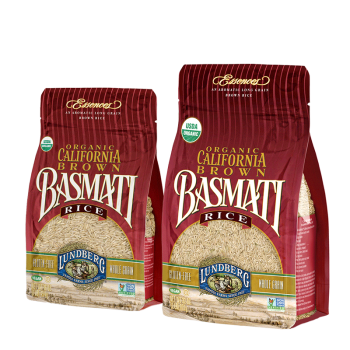Sh*t. There’s more arsenic in rice products than we thought.
November 20, 2014

I hate it when healthy things turn out to be tainted with not so healthy things. Take arsenic in rice. We first heard about rice being contaminated with arsenic a few years ago, but there’s new data out this month and it ain’t exactly consoling. First, a UK investigative TV show teamed up with a university there and tested over 80 products for arsenic. They found 58% would fail the European Union’s proposed standards for arsenic in rice for kids. Popular products like Rice Krispies and infant rice cereal (both organic and regular brands) failed to meet those standards. This is a good time to mention that Canada and the US don’t have standards regulating arsenic in rice. (Yeah, I know, best to harass your federal politician about this). I discovered that particular UK report when I was researching my column on pasta (To Wheat or Not to Wheat?). Then Consumer Reports released a new updated report on arsenic in rice this week and it was even less comforting for anyone that enjoys gluten-free products heavy in rice (ahem). Based on the bad news in there I had to update my pasta guide. I also folded some of this info into my holiday cracker guide. So what did Consumer Reports find exactly?
The bad news
- Brown rice averaged 80% higher levels of inorganic arsenic than white rice (rats!). Why? Because arsenic accumulates in rice’s outer layers, which are removed from white rice.
- Parboiled rice is the worst of all the white rice.
- Rice pasta and infant rice cereal has way more arsenic than they previously thought. CR says kids shouldn’t have rice pasta more than once every two weeks.
- Kids under 5 shouldn’t drink rice milk.
- Inorganic arsenic is a carcinogen. Consumer Reports says: “regular exposure to small amounts of arsenic can increase the risk of bladder, lung, and skin cancer, as well as heart disease and type 2 diabetes. Recent studies also suggest that arsenic exposure in utero may have effects on the baby’s immune system.”
- There was no difference between certified organic and non-organic rice on the arsenic front (insert sad face).
The good news
- Basmati rice from California, India and Pakistan is the lowest in arsenic, as is California sushi rice. CR says that you can eat 4.5 weekly servings of these – twice as much as they recommend for other rice – and not boost your lifetime cancer risk.
- Medium grain California rice had lower levels than most.
- Brown basmati rice from California had the lowest of all the brown rice and was lower than some white rice.
- This all bodes well for the Lunberg rice company which grows offers lots of California grown options in both organic and non.
- Other grains don’t have the same arsenic problem (phew), so you can happily eat quinoa, barley, farrow, millet, buckwheat, polenta and amaranth without breaking a sweat. Well,unless they’re really hot. Then all you have to worry about is your dinner burning your tongue.
Why is there even arsenic in rice?
Well, arsenic can be naturally present in soils, but inorganic arsenic in rice is there because of pollution in the soil from things like pesticides and poultry feed. That arsenic could have been there from decades past (like old cotton fields converted to rice fields in the southern US). Rice is really good at soaking it all up, unfortunately.
So how much rice is okay to eat?
Consumer Reports analyzed all the data out there and developed a point system. Turns out we should only eat 7 points worth of rice products a week, max. Take a look and do your own math, especially if you have kids.


